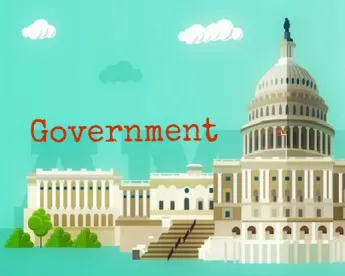On December 20, Congress reached a deal on a new stimulus package (the “Package”). Included in the Package is $284 billion for a second round of the Paycheck Protection Program (“PPP”), $15 billion is set aside for live venues, independent movie theaters, and cultural institutions, as well as an additional $20 billion for the Economic Injury Disaster Loan Program. Additionally, clarifications are made on forgivable expenses for PPP and tax deductions for PPP expenses, including for borrowers under the original PPP.
The SBA will establish regulations no later than 10 days after enactment of the act. The current legislative text is available here and is slated to be finalized this week.
PPP Second Draw Loans
The Package creates a second draw loan (the “Second Draw”) for smaller and harder-hit businesses, with a maximum amount of $2 million.
Eligibility
In order to be eligible for the Second Draw, entities must:
-
Employ not more than 300 employees. Businesses with multiple locations that are eligible under the initial PPP requirements may not employ more than 300 employees per physical location;
-
Have used or will use the full amount of their first PPP;
-
Demonstrate at least a 25% reduction in gross receipts in Q1, Q2, or Q3 of 2020 relative to the same 2019 quarter. Applications submitted after January 1, 2021 are eligible to use Q4 of 2020. Note that there is a special timeline for businesses not in business in 2019; and
-
Be businesses, some non-profit organizations, housing cooperatives, veterans’ organizations, tribal businesses, self-employed individuals, sole proprietors, independent contractors, and small agricultural co-operatives.
-
News entities:
-
FCC license holders and newspapers with more than one physical location, as long as there are no more than 500 employees per physical location or the applicable SBA size standard, and section 511 public colleges and universities that have a public broadcasting station are eligible if the entity certifies that the loan will support locally focused or emergency information.
-
Affiliation rules are waived for newspapers, TV and radio broadcasters, and public broadcasters as long as there are no more than 500 employees per physical location or the applicable SBA size standard.
-
Waives the prohibition against publicly-traded news organizations from being eligible if the business certifies that the loan will support locally focused or emergency content.
-
-
501(c)(6) and Destination Marketing Organizations. These entities are eligible if
-
501(c)(6) organizations if:
-
The organization doesn’t receive more than 15% of receipts from lobbying;
-
The lobbying activities don’t comprise more than 15% of activities;
-
The cost of lobbying activities didn’t exceed $1 million during the most recent tax year that ended prior to February 15, 2020;
-
The organization has 300 or fewer employees; and
-
Are not professional sports leagues or organizations with the purposes of promoting or participating in a political campaign or other political activities.
-
-
Destination Marketing Organizations if:
-
The organization doesn’t receive more than 15% of receipts from lobbying;
-
The lobbying activities don’t comprise more than 15% of activities;
-
The organization has 300 or fewer employees; and
-
That destination marketing organization is registered as a 501(c) organization, a quasi-government entity, or a political subdivision of a state or local government.
-
-
-
Ineligible entities include those listed in 13 CFR 120.110 and subsequent regulations, except for those that have been made eligible by statute or guidance. The waiver of affiliation rules that applied under the initial PPP requirements still apply.
Loan Terms
-
Maximum loan: 2.5x average monthly payroll costs in the one year prior to the loan or the calendar year, or $2 million. Entities with NAICS code 72 may receive loans of up to 3.5x average monthly payroll costs, not to exceed $2 million.
-
Fees are waived for both borrowers and lenders.
-
For loans of not more than $150,000, the borrower may submit a certification attesting that the entity meets the revenue loss requirements on or before the date the entity submits their loan forgiveness application. Non-profits and veterans organizations may utilize gross receipts to calculate their revenue loss standard.
PPP Expenses
The Package allows for the following expenses to be considered allowable and forgivable uses of PPP funds:
-
Payments for software, cloud computing and other human resources and accounting needs.
-
Costs related to property damage due to public disturbances that occurred during 2020 that are not covered by insurance.
-
Expenditures to a supplier pursuant to a contract, purchase order, or order for goods in effect prior to taking out the loan that are essential to the borrower’s operations at the time at which the expenditure was made. Supplier costs of perishable goods can be made before or during the life of the loan.
-
Personal protect equipment and adaptive investments to help a borrower comply with COVID-19-related federal, state or local health and safety guidelines during the period between March 1, 2020 and the end of the national emergency declaration.
The above expenses are allowed for loans made before, on or after enactment of the act, except in the event that forgiveness has already been obtained. The Package also clarifies that other employer-provided group insurance benefits, such as group life, disability, vision or dental insurance are included in payroll costs.
Simplified Forgiveness Application
The Package creates a simplified application process for loans under $150,000 such that:
-
Borrowers will receive forgiveness if they provide a lender with a one page certification that includes a description of the number of employees the borrower was able to retain because of the covered loan, the estimated total amount of the loan spent on payroll costs, and the total loan amount.
-
The SBA must establish this form within 24 days of enactment of the act.
Clarification of Tax Treatment of PPP Loans
The Package specifies that forgiven PPP loans will not be included in taxable income. It also clarifies that deductions are allowed for expenses paid with proceeds of a forgiven PPP loan, effective as of the date of enactment of the CARES Act and applicable to subsequent PPP loans. This same tax treatment also applies to EIDL grants and certain loans and loan repayment assistance.
Loan Increase Due to Updated Regulations
Requires the SBA to release guidance to lenders within 17 days of enactment of the act that allows borrowers who returned all or part of their PPP loan to reapply for the maximum applicable, including if calculations have increased due to changes in interim final rules, so long as they have not received forgiveness.
Farm Credit System Institutions
Farm Credit System Institutions are now eligible to make PPP loans.





 />i
/>i
